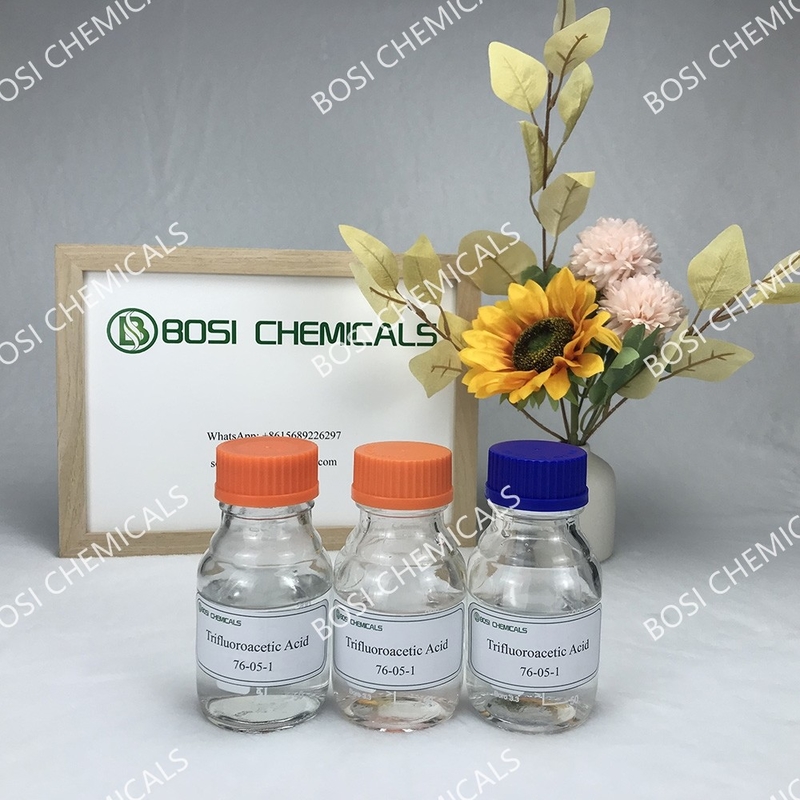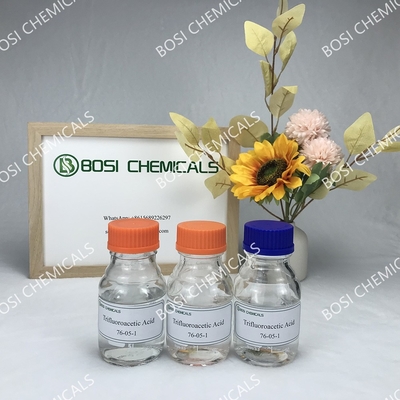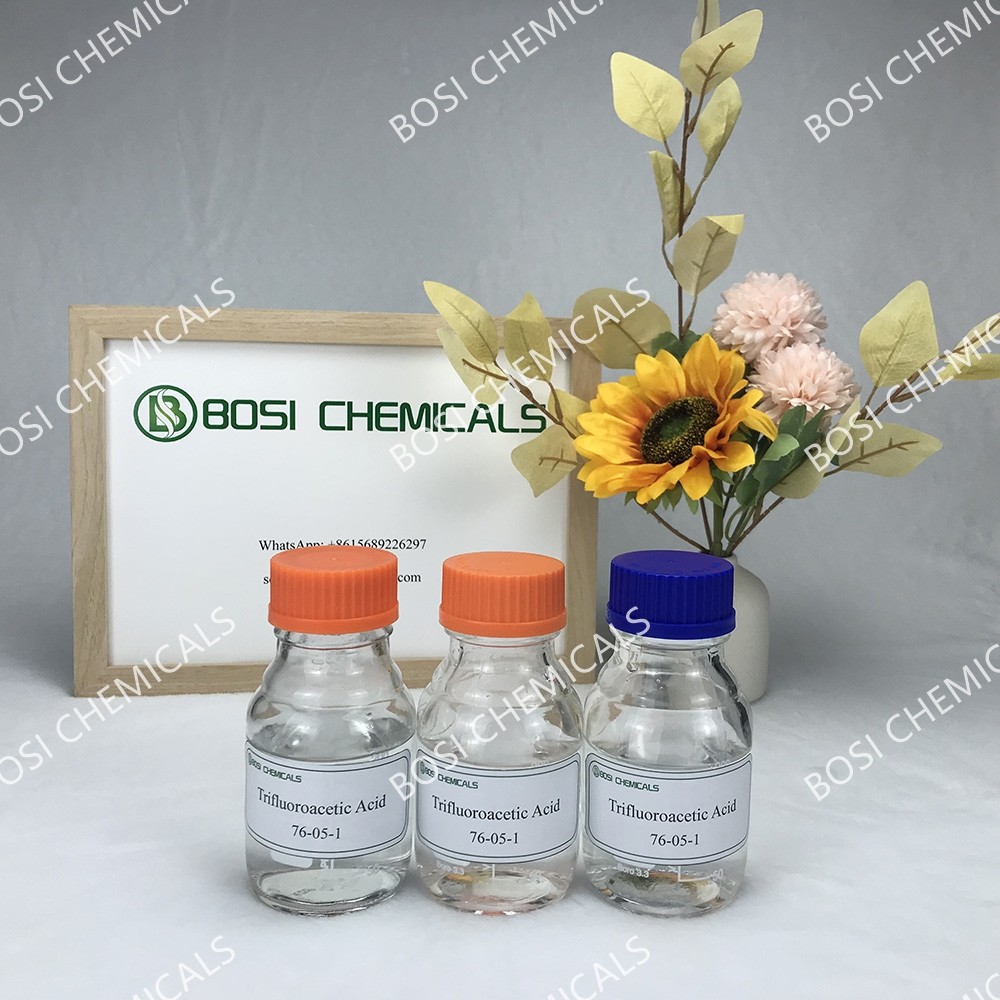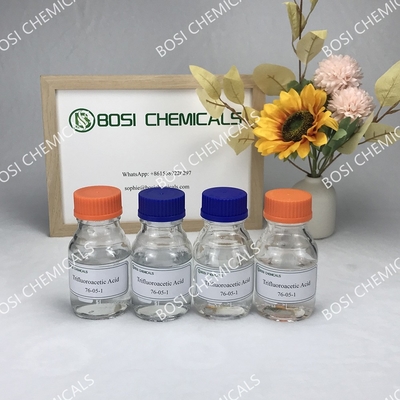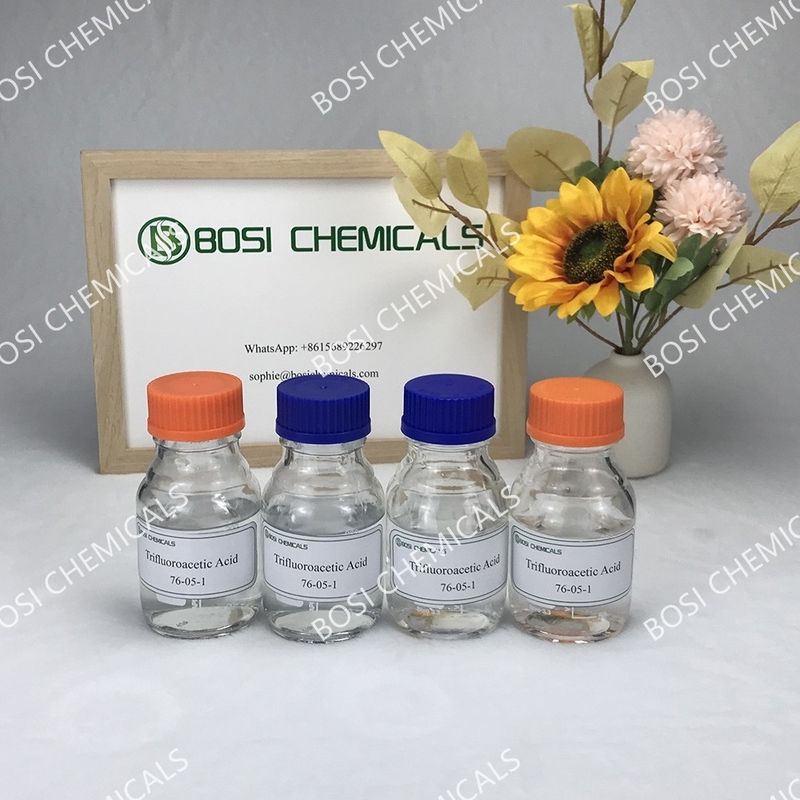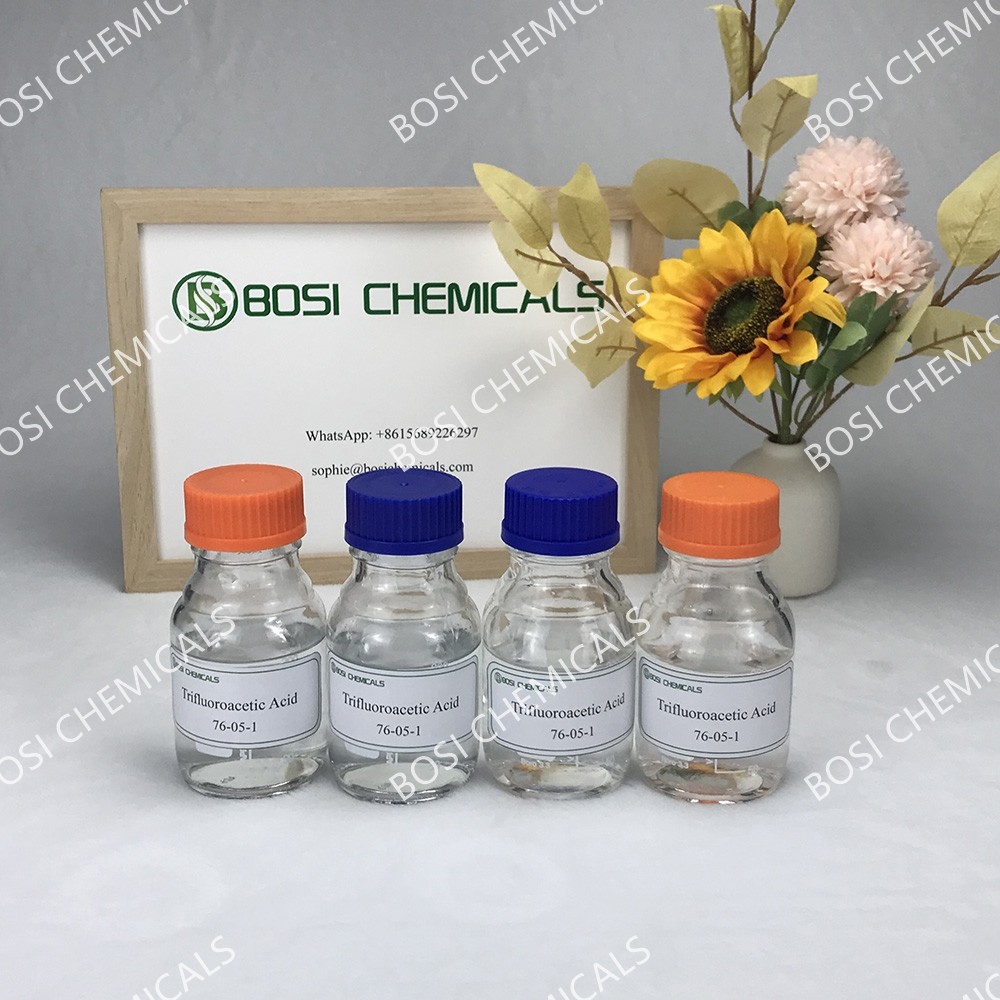CAS No. 76-05-1 Trifluoroacetic Acid With Purity Over 99%
Trifluoroacetic acid is a colorless and hygroscopic liquid at room temperature. It is similar in smell to acetic acid and has relatively stable chemical properties. However, when it encounters sodium borohydride or lithium aluminum hydride, it can be reduced to trifluoroacetaldehyde and Trifluoroethanol. Trifluoroacetic acid is soluble in water and chlorinated alkanes, methanol, benzene and alkane compounds, but when the alkane compounds contain more than six carbon atoms, it is difficult to dissolve in trifluoroacetic acid, with some exceptions. However, some protein and polyester polymer compounds have good solubility in trifluoroacetic acid. In addition, trifluoroacetic acid is easily dehydrated into trifluoroacetic anhydride under the action of phosphorus pentoxide. Trifluoroacetic acid has strong stability, but its amides and esters are more easily hydrolyzed. Using this property, trifluoroacetic acid can be converted into acid or anhydride for the preparation of sugar or amino acid compounds.

| ITEM |
CONTENT |
| Alias |
TFA |
| CAS No. |
76-05-1 |
| EINECS No. |
200-929-3 |
| MF |
C2HF3O2 |
| Application |
Fine chemical raw materials |
| Boiling Point |
72.4℃ |
| Critical pressure |
3.26MPa |
| Grade |
Pharmaceutical Grade |

Application of trifluoroacetic acid
(1)Trifluoroacetic acid is used as a catalyst in organic synthesis reactions: Trifluoroacetic acid can be used as a catalyst for many organic synthesis reactions, and the catalytic reaction proceeds smoothly. LRonchin et al. have conducted a detailed study on this feature of trifluoroacetic acid. When studying the Beckmann rearrangement of cyclohexanone oxime, trifluoroacetic acid was added to a polar aprotic solvent as a catalyst for the reaction. The study found that when the reaction conditions are relatively mild, the catalyst trifluoroacetic acid has good regeneration, and compared with the traditional catalyst oleum, the catalytic efficiency of trifluoroacetic acid is higher, and it can continuously catalyze important chemical products in the production process. Therefore, based on this research, LRonchin proposed a new catalytic method, which solved the various drawbacks of using oleum as a catalyst in the past, such as large consumption of catalytic substances and poor continuous production capacity;
(2) Trifluoroacetic acid was used as a preparation ion Membrane raw materials and modifiers: ion membranes are widely used in the caustic soda industry. In the process of industrial preparation of ion membranes, using trifluoroacetic acid as a raw material to modify the ion membrane can not only effectively improve the service life of the ion membrane , reduce the cost of industrial manufacturing, and also significantly improve the current effect of the caustic soda industry;
(3). Trifluoroacetic acid is used to promote the esterification reaction: as described in the previous section, the trifluoroacetic acid is converted into trifluoroacetic anhydride, and the acidic The weaker oxyacid reacts, and after a series of chain reactions, an acyl cation with strong acylation ability can be dissociated. Catalyze the smooth progress of the acylation reaction. Using this feature, it can be used to catalyze the smooth progress of some esterification reactions. For example, in the absence of acyl cations, acid compounds and hydroxyl compounds with lower activity can only be heated under heating conditions. The esterification reaction occurs, but if under the action of acyl cation, the reaction can be promoted spontaneously.

 Your message must be between 20-3,000 characters!
Your message must be between 20-3,000 characters! Please check your E-mail!
Please check your E-mail!  Your message must be between 20-3,000 characters!
Your message must be between 20-3,000 characters! Please check your E-mail!
Please check your E-mail! 

